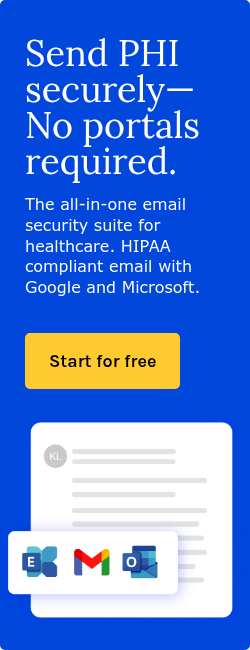5 min read
Is there a difference between first and third-party cookies?
Kirsten Peremore
June 20, 2025

There is a difference between first and third-party cookies, as established in research analyzing web tracking practices, including those on health-related websites. First-party cookies are created and stored by the website a user is directly visiting. These cookies are tied to the domain of that website and are sent back to the server of the same domain.
Third-party cookies are set by domains other than the one the user is visiting. These are typically placed by external services, like advertisers, analytics providers, or social media platforms, and can track users across multiple websites, aggregating data on browsing habits and preferences. The distinction is not merely technical but has substantial implications for privacy and data protection.
Third-party cookies are prevalent, especially on commercial health information websites in the United States. According to a PLoS One study analyzing health information website tracking in Germany, “They examined 538 web pages with information on COVID-19 and 89% stored third-party cookies…They found data transfers to third parties on 98.6% of all websites and 94.3% of them stored at least one third-party cookie.”
What are first- and third-party cookies?
A letter published in the Journal of General Internal Medicine provides insight into the prevalence of data tracking on websites across various industries, “The average number of ad trackers across included websites was 2.11 (government), 7.15 (non-profit), and 15.84 (commercial) (p < 0.001).”
First-party cookies are created by the website that the user is actively visiting. These cookies are used to remember user preferences, login information, and other settings that enhance the user’s experience on that specific site. For example, when a patient logs into a healthcare portal, first-party cookies may keep them authenticated during their session or remember their language preference for future visits.
These cookies are only accessible to the domain that set them, which generally limits their use to functionalities directly related to the user’s interaction with the site. Third-party cookies, on the other hand, are set by domains other than the one the user is visiting. These are typically inserted through embedded content such as advertisements, social media plugins, or analytics scripts.
Third-party cookies can track users across different websites, building detailed profiles of their browsing behavior. When a user visits a health information website, third-party cookies may transmit data to advertising networks or analytics companies, often without the user’s explicit knowledge or consent.
Why are cookies relevant in healthcare?
A Karlstads University paper, ‘Cookies, cookies everywhere,’ which explores the uses of cookies, noted, “Trackers, also known as third-party cookies, are spawned on ca. 60 percent of the top one million websites... Google has by far the most trackers present on the web, tracking users on ca. 80 percent of the top one million websites.”
Where both public and commercial entities operate health information websites and digital applications, cookies enable functionalities ranging from user authentication and session management to analytics and personalized content delivery. Their relevance extends beyond technical convenience to issues of privacy, consent, and data security.
First-party cookies are often used to enhance the user experience on patient portals or telemedicine platforms. Third-party cookies, however, introduce privacy risks, as they can facilitate the sharing of sensitive health information with advertisers, analytics firms, and other external parties.
A substantial proportion of US health-related websites, including those providing information about COVID-19 and abortion services, deploy third-party cookies that transmit user data to multiple third parties, often without adequate transparency or consent mechanisms. This is particularly concerning given the nature of health data.
Related: Can cookies be used in a HIPAA compliant manner?
The impact of first party cookies
The usability and functionality of health-related websites and applications can be enhanced by enabling features such as user authentication, session persistence, and personalization of content. An example of this is illustrated in a study exploring the functions of first party cookie tracking, “Another way to cache such identifiers is to store them in a first-party context, and send them to a third party if needed. More specifically, a tracking script embedded in the first-party context of a site could store the identifier (cookie) in the first-party context and send it to the tracker in a dedicated request.”
This assists in improving the overall user experience and facilitating seamless access to health information and services. It can lead to increased patient engagement, better adherence to treatment plans, and more efficient communication between patients and healthcare providers.
However, while first-party cookies are generally considered less invasive than third-party cookies, they are not without privacy implications. If not properly secured, first-party cookies can be susceptible to unauthorized access, potentially exposing sensitive health information. The data collected through first-party cookies can be aggregated and analyzed to gain insights into patient behaviors.
The risk of third party cookies
A comprehensive study of U.S. non-federal acute care hospital websites found that 98.6% included third-party tracking, with a median of 16 third-party data transfers per homepage, underscoring the ubiquity and scale of this practice. These cookies collect persistent identifiers, IP addresses, and URLs visited. The data may be used to profile individuals, target them with health-related advertisements, or even be sold to other third parties.
It raises concerns not only about dignitary harms from privacy loss but also about the potential for legal liability. The risks are exacerbated by the fact that many third parties are not subject to health privacy regulations like HIPAA, allowing them to use collected data for purposes that may conflict with patients’ best interests, which have reportedly been made available for purchase.
The data collected through third-party cookies may be incorporated into risk scores used for determining eligibility for credit or insurance products, amplifying the potential for discrimination or financial harm. The lack of transparency about how third parties use this data, combined with the difficulty for users to opt out or even be aware of such tracking, makes third-party cookies a substantial privacy threat in the healthcare context.
Why the line between “health data” and “consumer data” is blurry online
According to a qualitative study published in the Journal of the American Medical Informatics Association, experts unanimously noted that all digital data, regardless of its initial purpose, can become health data when aggregated across sources and over time. It includes information from social media, online purchases, browsing histories, mobile app usage, and more, which collectively create a digital health footprint.
Five key characteristics contribute to this blurring: invisibility (users are often unaware of how their data are tracked), inaccuracy (digital data can be flawed or incomplete), immortality (data are stored indefinitely and can be aggregated over time), marketability (data have commercial value and are frequently bought and sold), and identifiability (individuals can often be reidentified from supposedly anonymous datasets).
These factors mean that data not traditionally considered health-related can be analyzed and combined to infer sensitive health information, such as mental health status, reproductive health, or risk for certain diseases. The regulatory environment in the United States exacerbates this issue, as HIPAA is sector-specific and primarily covers data collected by healthcare providers, insurers, and related entities, leaving large swaths of consumer-generated digital data unprotected.
According to NPJ Digital Medicine study ‘Privacy protections to encourage use of health-relevant digital data in a learning health system,’ “An increasingly important example of information leaving HIPAA’s coverage is when a consumer uses a third-party health application (app) to obtain Category 1 data for personal use. Health apps used by consumers are frequently hosted by third parties and may share data further, with little transparency to users.”
Consumer data can be linked to electronic health records to enrich clinical insights, demonstrating the practical convergence of consumer and health data streams. As digital footprints expand and analytic techniques become more sophisticated, the distinction between health and consumer data becomes functionally meaningless; any data can be health data when viewed through the lens of predictive analytics and cross-referenced with other sources.
Related: HIPAA Compliant Email: The Definitive Guide (2025 Update)
FAQs
What are cookies?
Cookies are small files stored on your device by websites to remember your preferences, login details, and browsing activity.
What are tracking cookies?
Tracking cookies collect data about your browsing behavior across multiple websites to personalize ads and content, but they raise privacy concerns.
Are tracking cookies spyware?
No, tracking cookies are not spyware; they store data to enhance user experience, but can act like spyware if they collect extensive personal data without consent.
Subscribe to Paubox Weekly
Every Friday we'll bring you the most important news from Paubox. Our aim is to make you smarter, faster.



